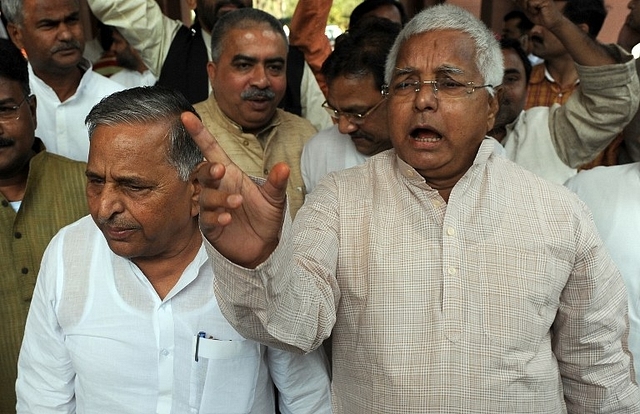
Bihar 2015 And UP 2017: Four Ways The Two States Are Similar (But Not Really...)
Are the comparisons between assembly elections of Bihar and UP justified beyond a point?
The assembly elections in Bihar in 2015 are seen as an important event of the Modi-era of Indian politics. Will the elections in neighbouring Uttar Pradesh be the same or are comparisons between the two clearly contrived?
There are four key themes we can look at.
First, both Uttar Pradesh and Bihar have a common history of anti-Congressism. Mulayam Singh Yadav came to power replacing ND Tiwari of the Congress as chief minister on 5 December 1989 and about three months later Lalu Prasad Yadav became chief minister of Bihar on 10 March 1990 replacing Jagannath Mishra, again of the Congress. Both replaced Brahmin CMs.
Since then, power in Bihar has never gone to national parties, though BJP was part of the government after entering into a coalition with Janata Dal of Nitish Kumar. In UP, however, BJP could come to power once for a full term from September 1997 to March 2002. However, political power has usually alternated between two dominant regional parties in the two states: RJD of Lalu Prasad Yadav and JDU of Nitish Kumar in Bihar; and Mayawati’s BSP and SP of Mulayam-Akhilesh in UP.
Secondly, political base of the electorate in both states shifted to the other backward class (OBCs). However, both states suffered split in the electorate rather differently. Bihar suffered a vertical split between the two OBC leaders- Lalu and Nitish, whereas UP suffered a horizontal split between in the votes between Mulayam and Mayawati with OBCs going to SP and Dalits going to BSP.
During the 2015 Bihar assembly elections, there was a union between the two vertical groups because of the coming together of JDU and RJD, The same is nowhere in sight though in UP as the horizontal split is in place and there is no chance of OBCs and Dalits coming together under the banner of any one party or leader.
Thirdly, Bihar in 2015 had a ‘maha’gathbandhan while UP in 2017 is seeing a simple SP - Congress alliance. The ‘maha’gathbandhan in Bihar 2015 included the JDU, RJD and the Congress. The same model although was rejected in UP. Here, only SP and Congress are going to the polls in an alliance.
However, the fundamental difference between UP and Bihar in this regard is that the Congress in UP has become almost a non-entity by being out of power since 1989, whereas in Bihar, Nitish’s dominant alliance partner Lalu’s RJD had a long innings in politics till 2005. Also, Nitish and Lalu could ensure some cooperation between their cadre and a transfer of their respective votes to each other’s parties. It is yet to be seen if Akhilesh and Rahul can do the same in UP.
Fourthly, in both Bihar and UP, the incumbent CMs faced in-house revolts. Nitish faced revolt from Jitan Ram Manjhi, his own protégé from the Dalit community whom he had installed as a ‘puppet’ CM; and in UP, incumbent CM Akhilesh faces revolt from his own father and party supremo Mulayam, and uncle Shivpal Yadav. While Manjhi’s revolt may not have been effective, Akhilesh can be put to serious problem through family feud and an in-house insurgency. Mulayam has already asked his followers to stand against Congress candidates of the coalition, and Shivpal had announced that he’d form a new party after the polls.